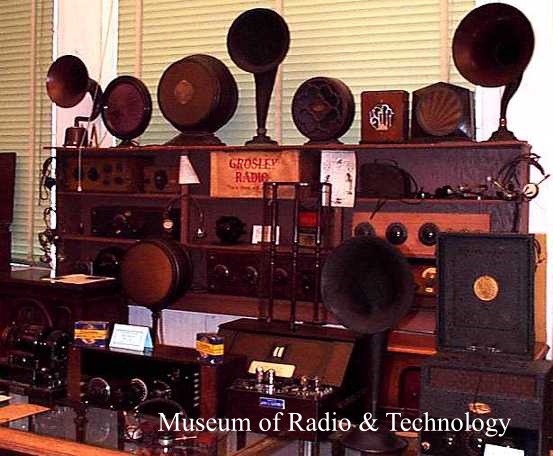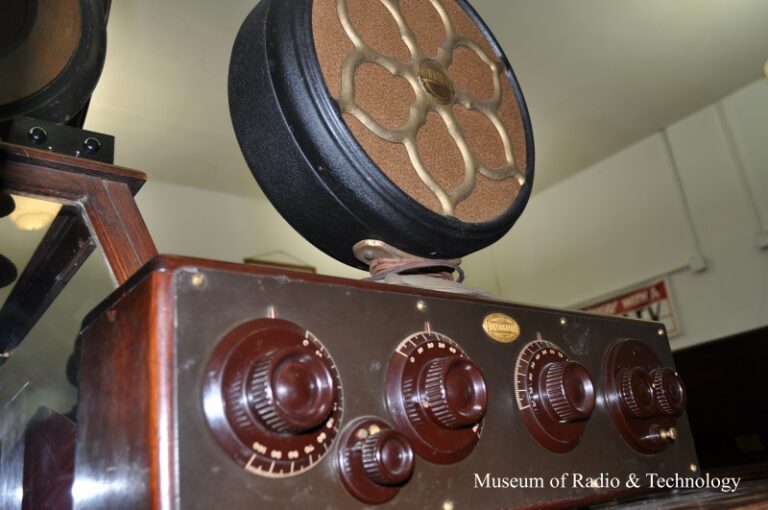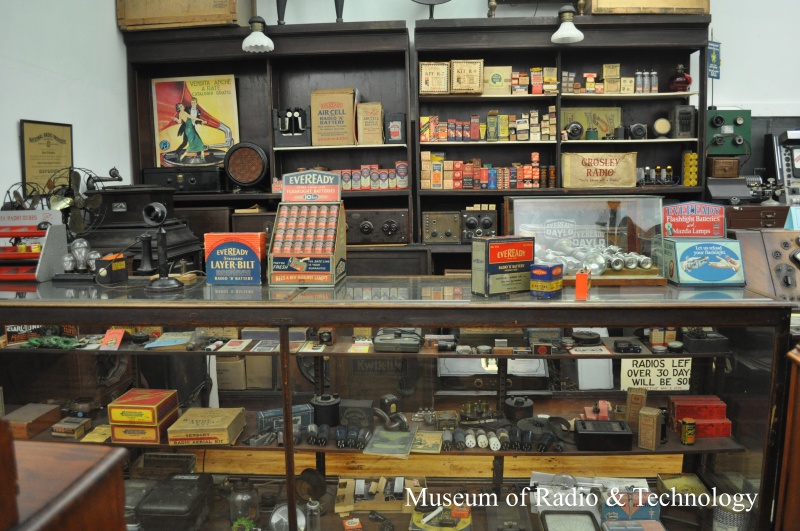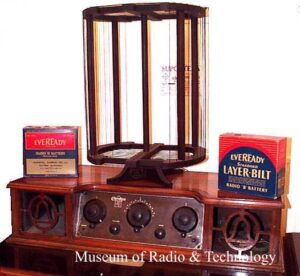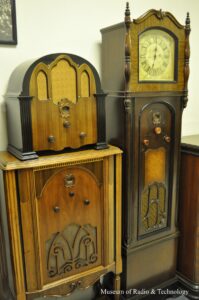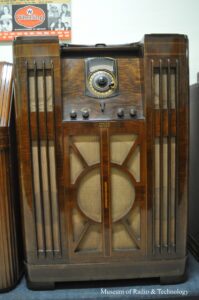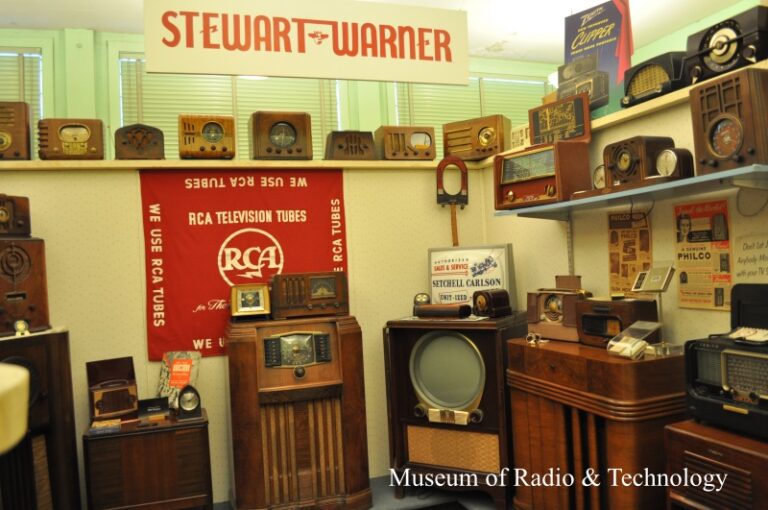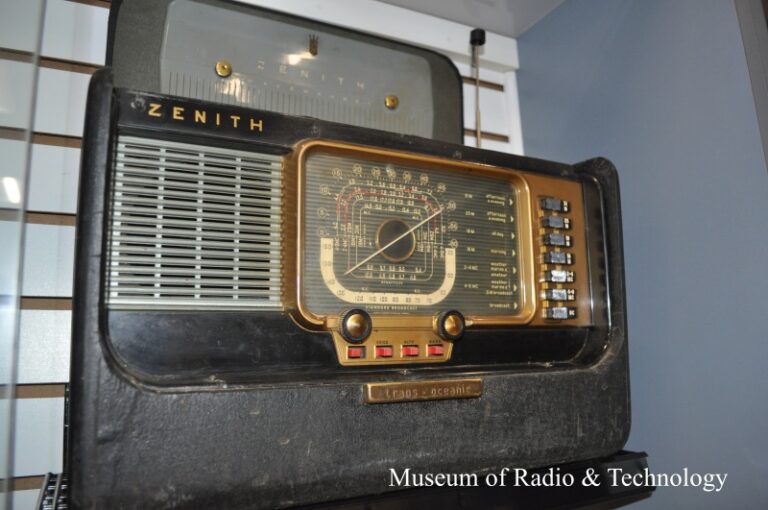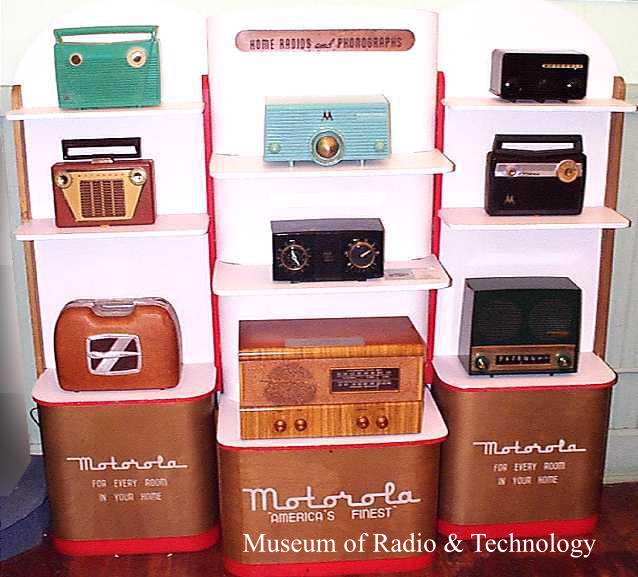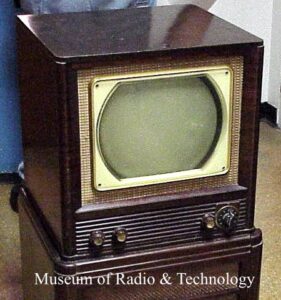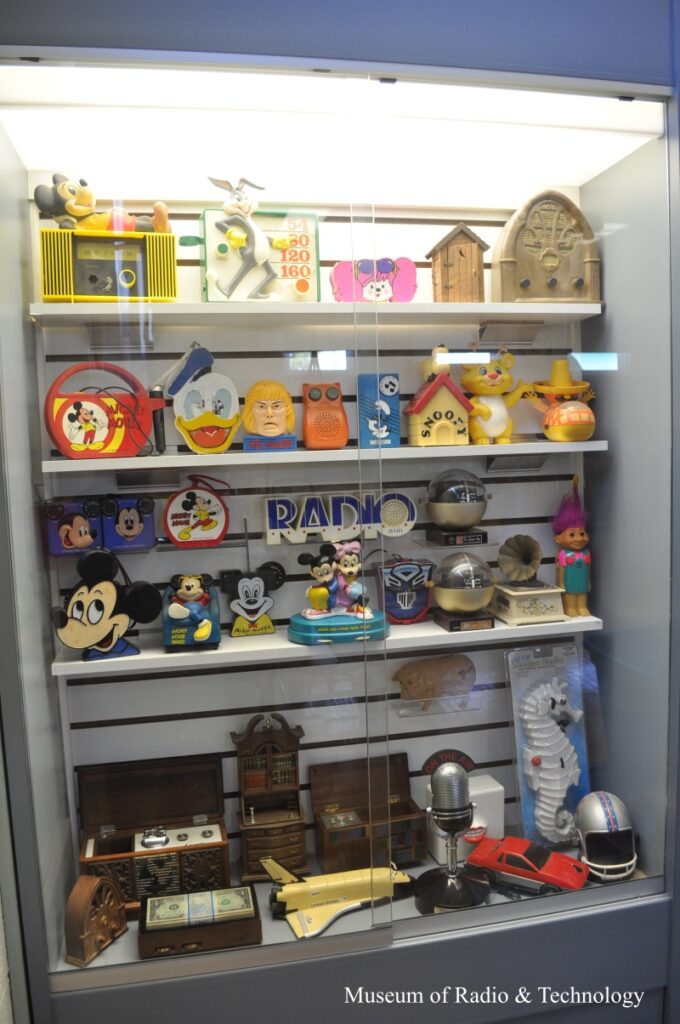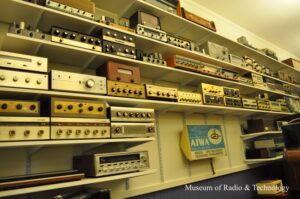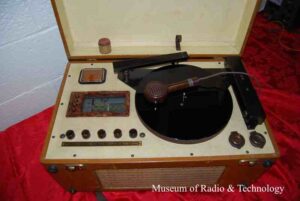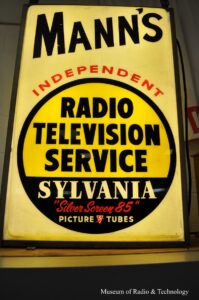Tour the History of Radio
1920's - When it all began:
Come tour the shop. Ever wonder what a radio store and repair shop would look like in the 1920’s? Come check it out.
See Atwater Kents, Grebes, and horn speakers.
Long before there was plastic these radios were hand crafted out of wood, metal, and Bakelite. What’s Bakelite you ask? Come visit the museum and find out.
Check out the speaker collection, the console collection, and the highboys and lowboys collections.
1930's - Radios for the average person and the great depression
By the 1930’s radio broadcast stations were everywhere and radio receivers had become affordable for the average person to purchase. This led to an explosion in manufacturers, technology advancement, and cabinetry designs. Cathedral, tombstone, and table top radios along with much larger console radios gave the consumer choices to fit any budget.
Check out the Table Top radios.
1940's - World War II
TV was invented before WWII but it’s development didn’t take off until the war was over. Mean while, during World War II, multi-band radios became popular. The Short Wave channels could tune in to stations around the world. In many cases, radio was the primary source for the war news across the United States.
Check out the TV collection.
1950's - Invention of the Transistor
Tubes were being supplanted by the transistor; a device that was a fraction the size of a tube and required much less power to operate. Plastic as we know it today made it possible to manufacture products much cheaper than out of wood or metal. The marriage of transistorized circuits inside of molded plastic cases brought forth all manor of consumer focused electronic products such as battery powered portable radios and low cost TV sets.
FM based radios were becoming more popular. The sound quality of Hi-Fi and stereo equipment gear was increasing in popularity but had not reached it’s “golden age” of the 60’s and 70’s.
Check out the portable radio collection.
1960's - Before Computer / Pre-digital
TV had become a house hold appliance and “color” TV was the new thing that everyone wanted but few could afford. Hi-Fi and stereo equipment was beginning it’s “golden age”.
Check out the Hi-Fi collection.
Check out the Record Player collection.
